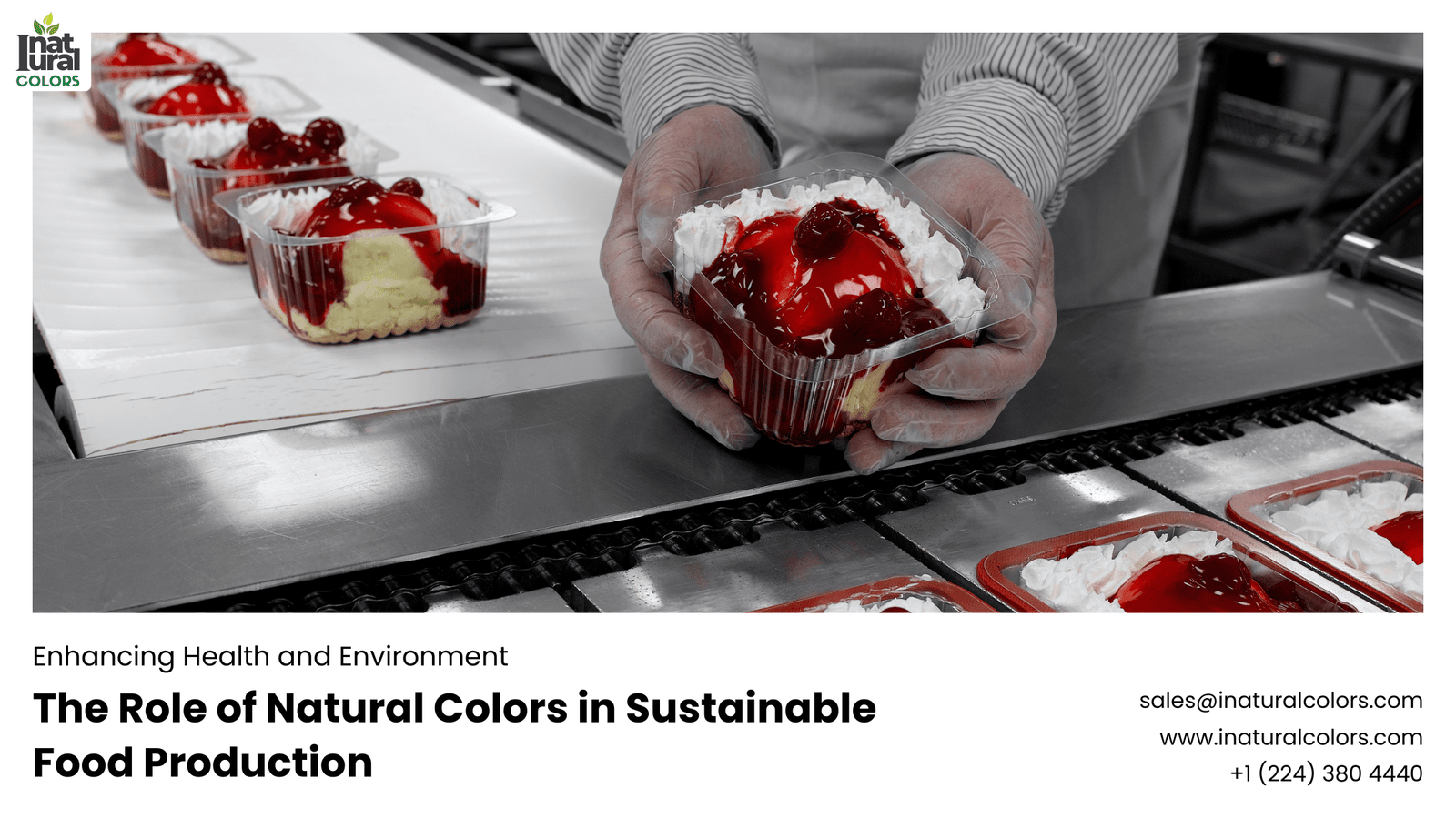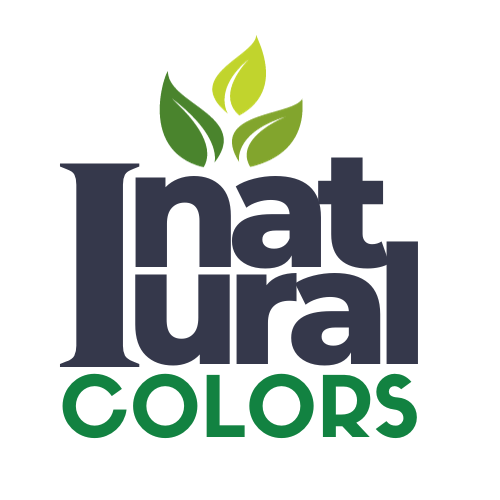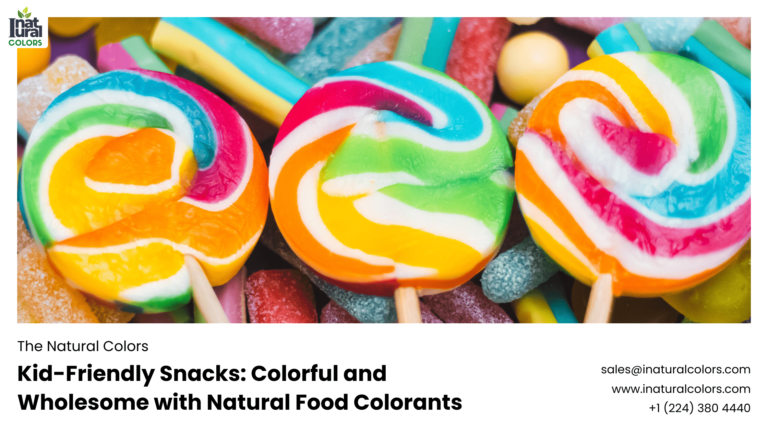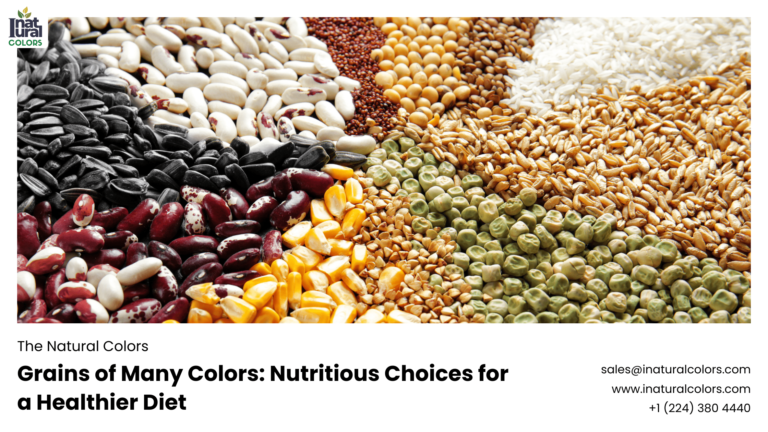Beautiful Plants For Your Interior

Natural Colors in Sustainable Food Production – Outline
- Introduction
- Brief overview of sustainable food production
- Importance of natural colors in food
- Understanding Natural Colors
- Definition of natural colors
- Common sources of natural colors
- Historical Context
- Traditional use of natural colors in food
- Shift to synthetic colors
- Environmental Impact of Synthetic Colors
- Production and pollution
- Health risks
- Benefits of Natural Colors
- Environmental sustainability
- Health benefits
- Common Natural Colors and Their Sources
- Carotenoids (e.g., beta-carotene from carrots)
- Chlorophyll (e.g., from spinach)
- Anthocyanins (e.g., from berries)
- Betalains (e.g., from beets)
- Natural Colors in Food Production
- How natural colors are extracted
- Application in different food products
- Case Studies of Natural Colors in Industry
- Successful use cases in the food industry
- Innovations and trends
- Challenges in Using Natural Colors
- Stability and shelf life
- Cost and supply issues
- Technological Advances
- Enhancements in extraction processes
- Biotechnology and synthetic biology
- Consumer Perception and Demand
- Increasing demand for natural ingredients
- Market trends
- Regulatory Landscape
- Regulations governing natural colors
- Differences between regions
- Economic Impact
- Cost analysis of natural vs. synthetic colors
- Market potential for natural colors
- Future Prospects
- Emerging trends and innovations
- Predictions for the future of natural colors in food production
- Conclusion
- Summary of key points
- Final thoughts on the importance of natural colors in sustainable food production
- FAQs
- What are natural food colors?
- How are natural food colors better for the environment?
- Are there any drawbacks to using natural food colors?
- What are some common natural food colors?
- How can consumers identify natural food colors in products?
The Role of Natural Colors in Sustainable Food Production
Introduction
Sustainable food production is a hot topic nowadays. With concerns over environmental impact and health, people are looking for ways to make food production more eco-friendly and healthier. One area gaining attention is the use of natural colors in food. Not only do these colors make our food look appealing, but they also play a crucial role in making food production more sustainable.
Understanding Natural Colors
Natural colors are pigments derived from natural sources such as plants, animals, and minerals. Unlike synthetic colors, which are created through chemical processes, natural colors come from everyday ingredients like fruits, vegetables, and even insects.
Historical Context
Natural colors have been used in food for centuries. Think about ancient civilizations that used turmeric for its vibrant yellow hue or beets for their rich red color. However, with industrialization came the rise of synthetic colors, which were cheaper and more stable. But these synthetic colors came with their own set of problems.
Environmental Impact of Synthetic Colors
The production of synthetic colors often involves harsh chemicals and generates significant pollution. Moreover, some synthetic dyes have been linked to health issues, prompting a reevaluation of their widespread use. In contrast, natural colors are typically safer for both humans and the environment.
Benefits of Natural Colors
Switching to natural colors offers numerous benefits. Environmentally, they are biodegradable and have a lower carbon footprint compared to synthetic dyes. Health-wise, natural colors can be packed with antioxidants and other beneficial compounds, making them a healthier choice.
Common Natural Colors and Their Sources
Let’s dive into some common natural colors and where they come from:
- Carotenoids: These provide yellow, orange, and red colors. Beta-carotene, found in carrots, is a well-known carotenoid.
- Chlorophyll: This gives plants their green color and is extracted from sources like spinach and parsley.
- Anthocyanins: These are responsible for red, purple, and blue hues and are found in berries, red cabbage, and grapes.
- Betalains: These pigments give beets their deep red color and are also found in some other plants like Swiss chard.
Natural Colors in Food Production
Extracting natural colors involves processes like pressing, boiling, and filtering to isolate the pigments. These colors are then added to various food products, from beverages and candies to baked goods and sauces.
Case Studies of Natural Colors in Industry
Many companies are successfully incorporating natural colors into their products. For instance, a major candy manufacturer recently replaced synthetic dyes with natural ones in its iconic gummy bears, leading to positive consumer feedback and a boost in sales. Similarly, a popular ice cream brand now uses beet juice for pink hues and spinach for green, demonstrating that natural colors can be vibrant and appealing.
Challenges in Using Natural Colors
However, using natural colors isn’t without its challenges. One significant issue is stability – natural colors can fade over time or when exposed to light and heat. Additionally, they can be more expensive to produce and supply can be inconsistent, depending on the availability of the raw materials.
Technological Advances
Fortunately, technology is helping overcome these challenges. Advances in extraction techniques are improving the yield and stability of natural colors. Biotechnology is also playing a role, with scientists exploring ways to enhance pigment production in plants and even develop new natural colors through genetic engineering.
Consumer Perception and Demand
Consumers today are more aware and concerned about what goes into their food. There is a growing demand for natural ingredients, including natural colors. This shift is driven by health concerns, environmental awareness, and a desire for transparency in food labeling.
Regulatory Landscape
Regulations around natural colors vary by region. In the European Union, for example, strict guidelines ensure that only safe and approved natural colors are used in food products. In the United States, the FDA also has regulations, though they are different in scope and stringency.
Economic Impact
From an economic standpoint, natural colors can be more costly than synthetic ones. However, the market potential for natural colors is vast, with consumers willing to pay a premium for products they perceive as healthier and more environmentally friendly. This shift is prompting more companies to invest in natural color technologies and sourcing.
Future Prospects
Looking ahead, the future of natural colors in food production appears bright. Emerging trends include the use of novel sources like algae and fungi for pigments, as well as improved methods for stabilizing and preserving these colors. Innovations in this field are likely to continue, driven by consumer demand and technological advancements.
Conclusion
Natural colors play a pivotal role in sustainable food production. They offer a range of benefits, from reducing environmental impact to improving health outcomes. While there are challenges, ongoing technological advances and growing consumer demand make natural colors a viable and attractive option for the future. Embracing these vibrant hues can help pave the way for a more sustainable and health-conscious food industry.
FAQs
What are natural food colors?
Natural food colors are pigments derived from natural sources like plants, animals, and minerals, used to add color to food products.
How are natural food colors better for the environment?
Natural food colors are biodegradable and have a lower environmental impact compared to synthetic dyes, which often involve harsh chemicals and pollutants.
Are there any drawbacks to using natural food colors?
While they are healthier and more sustainable, natural food colors can be less stable, more expensive, and sometimes harder to source consistently.
What are some common natural food colors?
Common natural food colors include beta-carotene (from carrots), chlorophyll (from spinach), anthocyanins (from berries), and betalains (from beets).
How can consumers identify natural food colors in products?
Consumers can look for labels indicating the use of natural colors, often listed by their source, such as “colored with beet juice” or “contains beta-carotene.”



